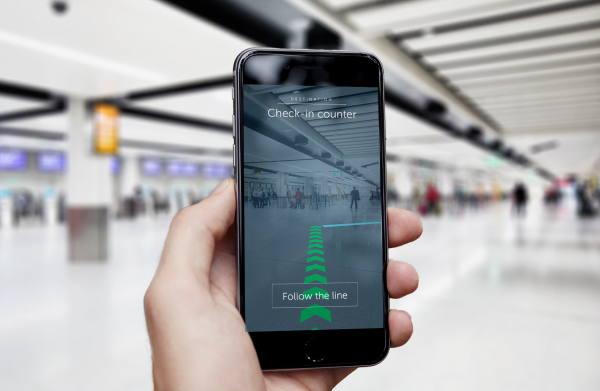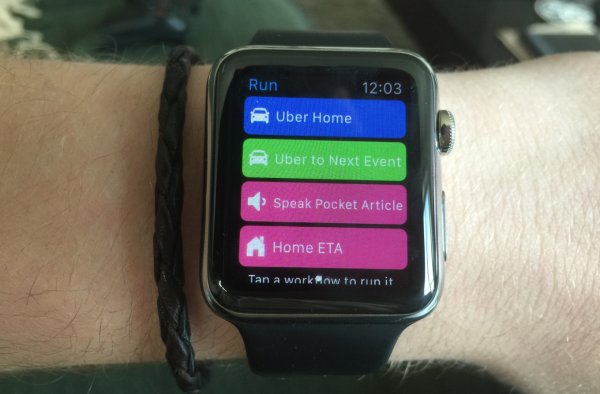The UK’s second busiest airport, Gatwick, has opted for the latter approach to power an indoor navigation system it’s launching as part of a wider, multi-year transformation program.
It’s now finished kitting out its two terminals with around 2,000 battery-powered beacons so that digital map users will get a more accurate blue dot as they wander around. The beacon system will also be used to power an augmented reality wayfinding tool (pictured above) — so that mobile users will be able to be guided to specific locations within the terminals via on-screen arrows. The beacon system is slated as supporting positioning with +/-3m accuracy. […]
Gatwick says it will not be collecting any personal data via the beacons but says “generic information on ‘people densities’ in different beacon zones” will be used to help improve airport operations — such as queue measurement, streamlining passenger flows and reducing congestion.
This is the first time in a while we've heard of Bluetooth beacons in the wild. This is something to watch. Venues will be motivated to adopt this for more analytics, just like Gatwick. Consumers will be motivated for easier navigation. In addition to airports, think malls and Disneyland.
This is a "boring" technology that will be fundamental to augmented reality applications in the real world.
I'm eager to see if Apple unveils more progress with their four-year old iBeacons technology.

